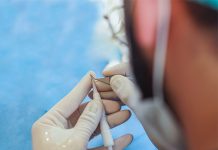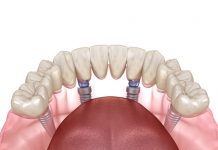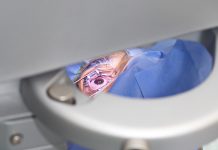Gastric Balloon
Gastric Balloon procedure in Turkey, its average cost, types, Stomach Balloon treatment and everything you must know for healthy weight loss are explained.
The Reality of Obesity Around the World
Many people would agree that gaining weight is a lot easier than losing it. Although this gaining or losing issue might be a different challenge for everyone, being overweight and trying to lose unwanted pounds is a real problem in our day.
According to World Health Organisation’s (WHO) Obesity and Overweight report in 2016, the obesity rate around the world has tripled since 1975. Nearly 2 billion of the world’s population is overweight and all of them are 18 years or older. This means that children are not even evaluated in the data and there is more to obesity for different age groups. Of these 2 billion overweight adults, 650 million of them are officially obese.
As for the children who are overweight or obese, 2019 data shows that there are nearly 38 million children under the age of 5 suffering from these issues.
In 2016, WHO reported that there were 340 million children and adolescents, aged between 5 and 19, that were suffering from being overweight or obese.
Obesity causes more deaths than being underweight all around the world. It might lead to serious health problems such as heart disease, diabetes or other complications related to excessive weight. These chronic diseases are the leading causes of death on our earth.
Despite the fact that it causes fatal health problems and mental challenges, obesity is preventable. Individuals with obesity also have the chance of getting rid of this condition. A healthy, balanced diet and regular exercise is the main way to lose excess weight. However, severe cases of obesity or being overweight can be treated thanks to the advancements in gastric surgeries.
Gastric Balloons are one of those effective methods.
What Is Gastric Balloon?
Gastric Balloon, also known as “Stomach Balloon” or “Intragastric Balloon” is a small balloon made of silicone. There is saline water inside the balloon. This makes the balloon able to reach the size of an orange or a small grapefruit. As a result, nearly half of the patient’s stomach is occupied. The saline water that fills the balloon is generally between 450 and 600 ml but the amount of this water might be different for each person.
What makes the Gastric Balloons so preferable is the fact that they do not need any surgical procedures to be placed in the patient’s stomach. As a result, there is no need for a general anaesthetic. All the patient needs to do is to go through an endoscopic procedure. Consequently, the balloon gets inside the patient through their mouth. So, there is no need for a surgery or general anaesthesia.
In addition to these, there are different types of Gastric Balloons. The Orbera, the Obalon, and the Elipse are three prominent options preferred by the patients.
The Orbera, especially, has been in use by the surgeons for nearly 20 years to our day. These types of gastric balloons have been used all around the world in more than 250.000 people. It is a safe method for non-surgical weight loss operations.
Once placed in the stomach, the balloon stays there for up to six months. Due to the space it occupies, its main goal is to limit the amount of food you eat. After six months or a year, the patients need to come and have their balloon taken out by their doctor. The procedure itself usually takes only 20 or 30 minutes.
Signs That Show It is Time to Consider Having a Gastric Balloon
Putting aside everything and first of all, you should not want to lose weight for anyone else. If you want to lose weight, you should be willing for it not for the sake of other people but for your own health.
It is very critical to be able to realise that one’s health is not defined by their weight. Being in your normal weight does not always mean you are healthy just like being overweight does not define an individual as unhealthy. It is just the increasing possibility of some diseases related to a bad diet and a bad lifestyle. Since being overweight is thought to be caused mostly by bad habits (except hormonal imbalances, genetic diseases, eating disorders, and etc.), people tend to think that overweight people are unhealthy. That is completely wrong and you should not feel bad or unworthy if you are an overweight individual.
If you ever decide on having Gastric Balloons or some other weight loss surgery, this should not be based on the opinion of other people. The most important thing here is a patient feeling all complete and happy in their own skin.
Assuming the patient is not pressured to have this Intragastric Balloon operation, signs that show you might need to consider this procedure can be different in various contexts.
Severe Obesity:
If you are suffering from obesity and if you are not able to lose weight with dieting and exercise, then it might be the time for considering a Gastric Balloon.
Individuals who are not able to move on a regular basis and the ones that are too overweight to undergo vital surgery can benefit from this procedure.
So, if you are considered as obese and cannot undergo surgery, gastric balloons might be an excellent option for you.
In cases that being extremely overweight meets chronic and fatal illnesses, one should certainly pursue losing that excess weight as fast as possible. These kinds of safe operations can be chosen as weight loss methods during the first phases of weight loss journey.
You Need to Lose Weight for a Surgery:
As mentioned above, one’s chances of having a risky surgery go tremendously up if they are too overweight to be operated on.
If you need to undergo any kinds of surgery and you need to lose weight for it, Gastric Balloons can provide a fast weight-loss. As a result, your surgical risk will also go down and you will be able to undergo the surgery.
Being Overweight Has Overwhelming Effects on Your Mental Health:
In such an era, it is very easy to value and define people by their appearance. Those unrealistic standards usually take their toll on overweight people. You might feel anxious in public spaces, at work, at gatherings, or in your clothes. You may feel like you just cannot take the pressure anymore and decide to change.
Although deciding on this by taking other people’s opinions as a bias can be dangerous, people need to understand other people’s mental needs, too.
Maybe you want to be able to move your body as freely as you want or maybe you are obsessively thinking about the possible health outcomes of being overweight.
If you meet the criteria for such a procedure, it is up to you to decide and no one else.
Learning Whether You Are Eligible for the Procedure or Not
There are several criteria for being a suitable candidate for the Gastric Balloon procedure.
However, it is very necessary to realise that the Gastric Balloon procedure may not be the perfect choice for each overweight individual. Your doctor is going to decide what is best for you after evaluating your general health and conditions.
Stomach Balloon procedure is a good option for you if you;
- Are not able to lose weight by following a healthy, balanced diet as well as a regular exercise routine.
- Have one or more health issues closely related to being obese such as high blood pressure, diabetes, or heart disease.
- Are too overweight for a surgical weight loss operation and need to lose weight fast before the surgery so as to reduce your risks.
- Have a body mass index (BMI) between 27 and 30+.
- Are wishing to commit to a healthy lifestyle in order to prevent possible further weight-related problems in the future.
- Have not had any stomach surgery before.
- Are aged between 18-65.
- Have not been internally exposed to caustic substances such as bleach.
- Do not have stomach ulcer.
- Do not have cancer or tumours.
- Are not pregnant at the moment.
- Do not have any psychological issues such as eating disorders, depression or mental illnesses that affect your daily life and your ability to make healthy decisions.
- Are not suffering from stomach hernia.
Benefits of Gastric Balloon
Without a doubt, the biggest and observable benefit of the Gastric Balloon procedure is a rather quick weight loss. Although weight loss is inevitable, one must be able to sustain healthy habits to remain in their ideal weight. The main success of the procedure depends on the patient’s ability of adapting to their new lifestyle.
As for the other benefits of Gastric Balloon, they are mostly weight-loss related. Gastric Balloon procedure can help to reduce obesity-related health problems such as;
- Diabetes.
- Hypertension (extremely raised blood pressure).
- Sleep apnoea.
- Mobility.
- Cardiovascular problems.
- Cardiopulmonary problems.
Besides, the patient’s self-esteem and confidence increases after such a procedure. They may feel less anxious around people as well as in their clothes.
Types of Gastric Balloons
There are several different types of Gastric Balloon procedures. Each has its own ways of application and advantages. The most acknowledged types of Gastric Balloons are;
- The Orbera.
- The Obalon.
- The Elipse (also known as the Gastric Pill).
1) The Orbera:
The Orbera Gastric Balloon is the one that has been in use for the longest time. It has been in use for approximately 20 years. The Orbera Gastric Balloon has two types.
One of them is the classic Orbera.
The classic Orbera stays in the patient’s stomach for a period of 6 months.
The other one is called the Orbera 365.
The Orbera 365 Gastric Balloon is a longer-term option. It remains inside the stomach for 12 months. Your doctor will decide which type of Orbera is for you during your examination in accordance with your needs and expectations.
Generally, doctors use 12-month balloon on the patients whose BMI are around 27. The other shorter option, on the other hand, is used on the patients with 30 or higher BMI.
The one-year balloon can generally be adjusted in accordance with the patient’s progress overtime. It is filled with a minimum of 500 millilitres of liquid; the maximum amount is 700 millilitres. After the procedure, the balloon can be filled with more liquid in order to enhance the feeling of fullness.
2) The Obalon:
The Obalon Gastric Balloon is the best choice for people who need to lose only 1 ½ – 2 stones (10-15 kilograms). It is the most suitable option for patients with a BMI of 27-30. However, there are cases that it is preferred for heavier patients, as well.
The Obalon Stomach Balloon might require further operation during which a second or even a third balloon is placed inside the patient. Nevertheless, there should be a certain amount of time between each operation.
Unlike the Orbera balloons, the Obalon remains inside the stomach for 3 months which makes it a solution for the patients that need a shorter weight loss period.
3) The Elipse:
The Elipse Gastric Balloon is by far the easiest method of Stomach Balloons. It does not require sedation, anaesthesia, or endoscopy, unlike other intragastric balloons.
It is swallow-able and can be deployed without endoscopy or without other procedures. Also known as the “Gastric Pill”, the Elipse Balloon requires only a 20 minute outpatient appointment.
The position of the pill is then confirmed with X-Ray results and immediately filled with the saline solution.
Since there is not any sedation or endoscopy required, you will be able to drive home by yourself as soon as the procedure ends.
Having a different function than the other balloons, the Elipse Gastric Balloon is not going to require any further visit to your doctor’s office. It is going to pass on its own nearly after 4 months.
However, it is not really acknowledged as an effective type of stomach balloon by most of the surgeons.
Starting Your Weight Loss Journey
So, you’ve decided that you want to lose weight and get much healthier. It is very normal to feel anxious. You may not really know where and how to start. It is best to keep a calm head and go step by step.
Finding a Clinic:
First of all and irrespective of the procedure you want to undergo, one must find a reliable clinic to reach their goals as safely as possible.
You might think of checking the Internet or consulting with a friend or with your GP.
The clinics you may find on the Internet can be more sinister than you think. Unfortunately, some clinics follow a double-sided attitude and cause severe negative consequences regarding your health. There are even clinics that have their nurses operate on you and not their doctors once you have been sedated.
To eliminate those kinds of risks, you must be extremely careful during your research on the Internet. The pages you see in the first lines of your search list might not always be as reliable as you think. You can try reading the comments on their website and social media accounts and checking their activity on those platforms. However, the comments on their website and other accounts might not always be reliable sources. You can think of searching forums or other websites that mention those clinics.
If you can, talking to their previous patients is also an option. By doing so, you can have the chance of learning about the clinic and the procedure from its first source.
You can demand seeing the before and after pictures of their previous clients if you have already decided on a clinic.
The Initial Consultation Appointment:
As is the case with all procedures, you must book an initial consultation appointment once you decide on a certain clinic.
During your first appointment with your doctor, you must be able to talk openly and convey what you truly want and expect from the procedure. So, your doctor can inform you whether your expectations are realistic or not.
The doctor is going to demand some tests and other information from the patient such as;
- The patient’s personal history of any previous surgical operations.
- Their overall health.
- Any underlying chronic conditions or illnesses.
- The medications they are currently using.
- The herbal remedies they are having at the moment.
- Some blood tests to identify possible Hepatitis B,C or HIV in the blood.
- Covid-19 Test one day before the procedure.
Once you have successfully and safely completed these steps, you just need to wait for the day of the procedure and your long-term results.
Before the Gastric Balloon Procedure
Prior to having any of the Gastric Balloons, it is better to start cutting down on your calorie intake. Increasing your exercise frequency and intensity are also going to help you get better and faster results.
Gradually starting to apply those lifestyle changes before the procedure will have an additional impact on your success. You might consider working with a dietician to support you along your journey.
Besides, applying those lifestyle changes from minor to major will help you get accustomed to your postoperative habits.
One week before the procedure also carries importance. Although diets are highly personalised nutrition lists, here are your possible eating instructions for the preoperative period.
What To Do Before Gastric Balloon Procedure?
- Try not to tire your stomach with heavy meals.
- Try to eat nutritionally dense foods such as whole vegetables and raw or cooked.
- Pay attention to consuming at least 2-2.5 litres of water every day. Staying hydrated is vitally important for your body.
- Limit your intake of highly processed foods such as processed carbohydrates, fast food, junk food or pre-packaged foods.
- Watch out for your stress levels. Extreme stress makes it harder for you to lose weight.
- Pay special attention to your resting times after your exercise activities so as not to tire your body out. Resting is going to heal your body at a quicker rate and you will not feel drained.
- Do not extremely limit your calories. This is harmful to your body and your internal organs. A qualified nutritionist can help you with your daily calorie intake. In addition to this, going on shock-diets will have a negative impact on your bone density. Once you lose the density in your bones, it is almost impossible to gain it back after a certain age.
- Try to eat meals high in fibre; for instance, getting your carbohydrate macros from dishes like oatmeal or whole grains will help you achieve this. You should pay attention to consuming fresh fruits and vegetables, as well. Most of those foods are prebiotics and they support your gut bacteria. This is going to help you a lot after the procedure.
Additionally, it is better for you to stop overeating. If you are suffering from Binge Eating Disorder and etc. you might think of getting help from a psychologist along the way. Eating disorders are sinister and they will get you to the point you have started. As for Binge Eating, it is best not to over-restrict yourself. Restriction will cause you to eat more.
During the Gastric Balloon Procedure
The Gastric Balloon procedure usually requires mild local anaesthesia. Yet, during procedures such as The Elipse Stomach Balloon, there is no need for any anaesthetics.
1) Anaesthesia and General Examination:
- First of all, your doctor is going to apply local anaesthesia on your throat area. This anaesthetic is a substance in spray form. Your throat will be numbed and relaxed yet you will be awake.
- After the sedation of your throat area, your doctor will perform a primary examination using an endoscopic camera. They will get down to your stomach with this device and observe the inner parts of your stomach. If there are no abnormalities such as ulcers or tumours or other conditions, the surgeon will continue the procedure.
2) Inserting the Gastric Balloon:
- A deflated pliable silicone balloon then will immediately be inserted down through your mouth and down your oesophagus, then directly to your stomach.
- Since your throat will be numbed and relaxed thanks to the anaesthetic spray, you are going to be able to swallow the deflated balloon more easily. If you are too anxious during the procedure, your doctor might also recommend muscle relaxing medications.
- Once they place the deflated gastric balloon in your stomach, it is going to be filled with saline water as soon as possible. This is going to happen thanks to a small filling tube (catheter) that has been attached to the balloon.
- After it is completely filled, your doctor will remove the catheter from your stomach by delicately pulling on its external end.
- The gastric balloons have self-sealing valves. So you do not need to worry about whether they are left open or not. It will start floating freely in your stomach once totally filled.
- Although the whole procedure takes nearly 20-30 minutes, you will be observed for a certain amount of time. You can go home safely then when your surgeon decides that you are okay to leave.
Once you leave the clinic, you have to come back 3-12 months later to have your gastric balloon taken out. This is not required for the Elipse Intragastric Balloon Procedure.
Aftercare and Recovery
You can safely go home on the same day of the procedure and resume your daily activities without any interruptions.
However, it is reliable to bring someone to drive you home in case you feel drowsy due to the sedatives.
It is really important not to see the gastric balloon as a permanent solution to your weight loss. The support you receive while the balloon is in is the most important part of this procedure. When your gastric balloon is taken out after several months, your stomach will return to its old size.
Therefore, it is highly important to stick to your healthy eating programme, to your exercise habits and most vitally to your self-discipline. It is the only way to sustain your results in the long term and not to gain that weight quickly back.
The support and a structured programme is the most important thing during this period. You can consider working with a qualified nutritionist or a personal trainer to help you get new, healthy habits.
As for the immediate aftercare, you are going to need to consume liquids only for a few days. Gradually, you are going to proceed to softer foods and at the very end to normal textured foods of any kind.
Postoperative Diet for Gastric Balloon Procedures
As mentioned before in the section, diets are highly personalised nutrition lists and they should be so. Each individual has unique nutritional needs and habits in harmony with their lifestyle. However, here is a possible glimpse of your postoperative diet for the very first week after the insertion of the Stomach Balloon:
- Drinking at least 1.5-2 litres of water every day
- Herbal teas
- Decaffeinated coffee
- Soups that are grain-free
- Skim or lactose-free milk, protein milk, or plant-based kinds of milk such as soy milk, almond milk, coconut milk, and oat milk
- Fat-free buttermilk
- Fat-free or lactose-free kefir – Kefir has usually very low or no lactose but you should be careful. Yet, it is helpful for gaining healthy gut bacteria.
- Fat-free yogurt or fat-free probiotic yogurt – This will help you with balancing your healthy gut bacteria
- Sugar-free compote
- Vegetable purée
- Fruit purée
Your new diet can be created with the help of a dietician. They are going to help you with creating meal plans that are balanced in macronutrients; that is, carbohydrates, proteins, and fats.
You can start consuming solid foods 10 days after the procedure. Since your portions will be controlled and smaller yet nutritionally dense, you will easily adapt to your new eating habits.
You should also stay active in accordance with your mobility abilities. Working out with a personal trainer can help you a great deal. You will both have learned how to exercise and how to sustain healthy yet not overwhelming exercise habits.
Possible Risks and Complications
As with all operations, the Gastric Balloon procedure has its own complications. Nonetheless, they should be disturbing only for a short period of time.
Most patients report nausea as the most common complaint after the procedure. You might feel like there is an external object in your stomach; there really is. You might suffer from nausea and vomiting for a few days, yet these can all be handled with medications. If medications do not seem to work effectively, you might need to get serums.
Possible complications after Gastric Balloon procedure are:
- Feeling somehow imbalanced being very similar to seasickness
- A heavy feeling in your abdominal area
- Abdominal pain or back pain
- Acid reflux or digestive issues
- Balloon rupture – this is indeed a rare side effect but it is expelled on its own naturally by passing through the bowel
- Injury during the insertion or the removal of the balloon –In order not experience this, it is very important to work with qualified and experienced clinics
- General pain
- Minor bleeding
- Nausea and vomiting
Risks:
Gastric Balloon is a very safe method when it is performed by professionals. The complication rates are very low, unlike the general opinion. You just need to pay special attention to staying hydrated and following your structured diet.
Many people tend to think Gastric Balloons are highly fatal. Yet, this is absolutely not true. The recent data shows that the mortality rate of gastric balloons is below 0.1%. For patients with obesity, this rate is 0.22%.
At the moment, the risk of death caused by gastric balloons is considered to be less than 4 deaths per 10000 cases.
Taking out the Gastric Balloon
3-12 months after the Stomach Balloon procedure, it will be removed by your doctor. Depending on the type of the balloon you were treated with, there might even be no need for any further visits to have it taken out (e.g. The Elipse Gastric Balloon).
Gastric balloon removal is just as easy as the installation, too.
- The Gastric Balloon will be removed the same way it has been placed, through your mouth.
- The surgeon might use local anaesthesia again to numb the area around your throat.
- A catheter will again be inserted down your throat slowly into your stomach.
- Your doctor will puncture and deflate the silicone balloon.
- Deflation will make the balloon able to be grasped and removed easily.
Once the balloon is taken out, it is very important to stick to your new lifestyle as mentioned earlier in the text.
You should also avoid smoking, alcohol (since they can trigger stomach ulcer and alcohol is very high in calories) and excessive consumption of processed sugar.
If you happen to eat more than you should, you will just throw it out by vomiting, and then you are good to go.
Although the balloon is removed after several months, there is an expectation of early removal on patients who cannot tolerate the balloon. This early removal is about 1 in every 20 people.
Alternatives of Gastric Balloon Procedure
Other than Gastric Balloon procedures, there are also other types of stomach operations and surgeries. These are simply can be listed as:
- Gastric Bypass: During this surgery, the upper part of the patient’s stomach is directly bounded with the small intestines. The main logic behind this surgery is to get the consumed food directly to the small intestines to make the body absorb less of the calories.
- Gastric Sleeve: A certain part of the stomach is simply removed to prevent the patient from consuming lots of calories. It is also known as the Bariatric Sleeve Surgery.
- Gastric Band: A surgical band is put around the patient’s stomach. Its main goal is to make the patient feel fuller after consuming food.
Your doctor can decide if you are eligible for those procedures or not. Yet, gastric balloons might be required before a stomach surgery.
How Soon Will I Be Fully Recovered After the Gastric Balloon Procedure?
Recovery from the Gastric Balloon procedure is not at all a long period. The patients are generally able to go back to their homes on the same day after the procedure. As long as the patient does not develop a serious reaction to the gastric balloon, they can check out on the same day.
You can also go back to work a day after the procedure. However, if your stomach is having difficulties in getting used to the balloon, this might take a day or two. So it is best to plan ahead.
For How Long the Stomach Balloon Will Stay in Me?
The gastric balloon might stay in the stomach between 3 and 12 months depending on the type of the procedure.
If you have the Orbera Stomach Balloon, it usually stays in for 6 months.
For the Orbera 365, this period of time extends to 12 months.
If you have the Obalon Balloon installed, it will remain in the stomach for three months. At the end of each month, a new gastric balloon might be placed up to balloons in total.
Putting aside all of these, in cases that the surgeon makes you swallow the Elipse Gastric Balloon, it will stay there for nearly 4 months and will be gone on its own by using the bowels.
How Much Weight Will I Shed Off After the Procedure?
The data shows that patients usually lose between 2 and 3 stones (15-20 kilograms) after the stomach balloon is inserted. This amount of weight loss usually takes 6 months. However, some patients can lose more weight if they strictly follow the instructions of their doctor and dietician.
70-80% of the weight loss usually takes place in the first 3 months after the procedure. As expected, weight loss often slows down after such a period. The existence of the balloon is important in the sense that the patients are able to overcome the plateau more easily with the gastric balloon in.
Will My Weight Loss Results Be Permanent?
It depends.
If you abandon your new healthy lifestyle habits, you can quickly gain that weight back. Your stomach will turn back to its old size once the balloon is removed, so you may not be feeling as full as you used to feel with the balloon in. This might lead you to eat a lot and gain weight. For that reason, sticking to your new habits and being able to sustain them as a lifestyle is so important.
If you keep on applying your new habits and sustaining them, you will not gain them back and become fitter each day.
Can Stomach Balloon Kill Me?
Gastric Balloons are almost the safest methods among all other gastric procedures and surgeries. Since there will be no incisions and no general anaesthesia, it is very hard for Gastric Balloons to cause serious complications. None of the side effects of Gastric Balloons are fatal unless you are severely ill.
The mortality rate from Intragastric Balloons is 4 in 10000 patients. That is an equivalent of 0.1%.
Is It Possible for the Balloon To Burst or Leak?
The Gastric Balloons have been used in hundreds and thousands of patients. Taking their experiences as a bias, it is very obvious that bursts and leaks are extremely rare incidents. Besides, the water inside the balloon is usually coloured blue just in case. So if any leakage occurs, you will see that your bladder turns blue or greenish.
If the Gastric Balloon ever deflates inside your stomach (though this is very extremely rare) it will pass through your bowels and get itself out on its own.
If you see changes in the colour of your urine, you should immediately contact your doctor.
Other than that, there is not really much to be concerned about.
Which Kinds of Activities Will I Be Able To Resume After the Procedure?
You can resume your daily activities one or two days after the operation. Patients are generally able to go back to work or to their routine the day after yet some of them can report a disturbing, unbalanced feeling in their stomachs.
Apart from these, you should abstain from strenuous physical activities labour at least for eight weeks.
How Much Does the Procedure Cost?
The cost of the Gastric Balloon procedures can change. It usually depends on the type of the balloon that is used, on your clinic, on your doctor, or even on the country, you have the operation. Most people prefer countries like Turkey to get quality Gastric Balloons for a cheaper price than in other continents.
How Will I Be Able To Work Out if I Resume Strenuous Activities?
You can start working out and your exercise regimen three weeks after the procedure. It is very important to incorporate exercise into your lifestyle as well as healthy eating habits. Those exercises do not have to be extremely intense or strenuous. Indeed, the concept of exercising should not be an overwhelming, terrible issue. Your main goal should be enjoying the exercise and the happiness hormones it makes you release.
Do I Have To Eat Purées or Drink Liquids for the Rest of My Life Without Indulging in the Foods I Love?
No, of course. You only need to drink liquids for a few days. After that, you can gently try softer foods like purées. 2 weeks after, you can start eating normal foods.
Getting accustomed to healthy eating habits does not require an individual to give up on their favourite meals even if they are considered as “junk food”. Food is food; they are basically energy calculated in calories. However, the quality of the calories you get in your body affects your health in different ways. You can always eat the meals you love and you should not ever obsessively restrict yourself. The more restricted you are, the more likely is the backlash. The whole issue is to learn to find moderation while consuming food as well as finding the root causes that led you to eat in enormous amounts. If those are mental issues, you should consider solving these problems with a therapist in the meantime for longer and sustainable results.



















